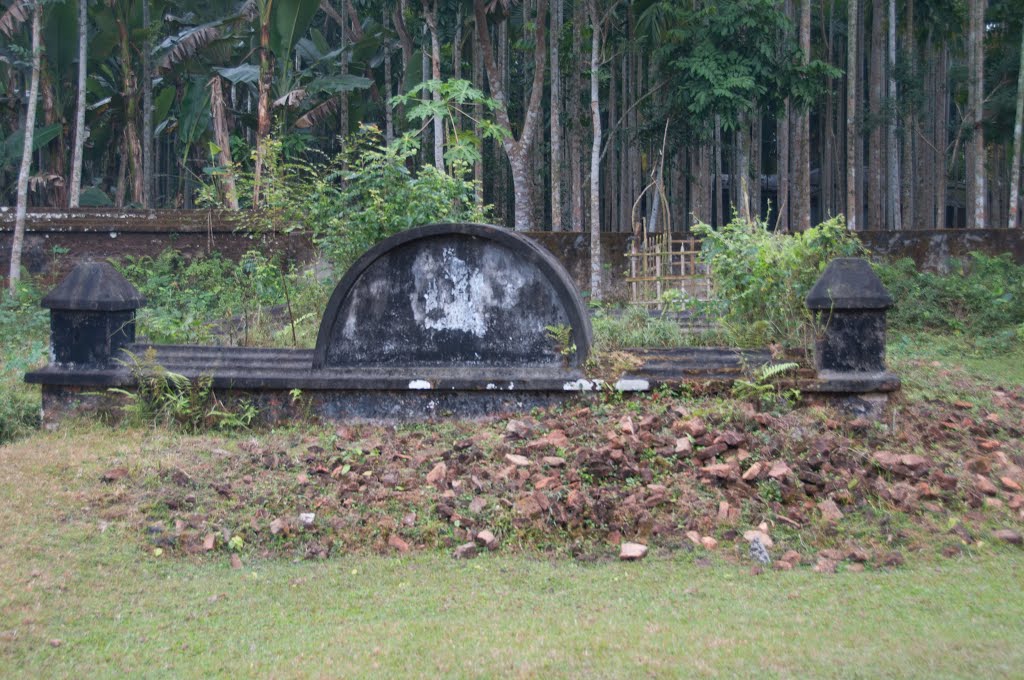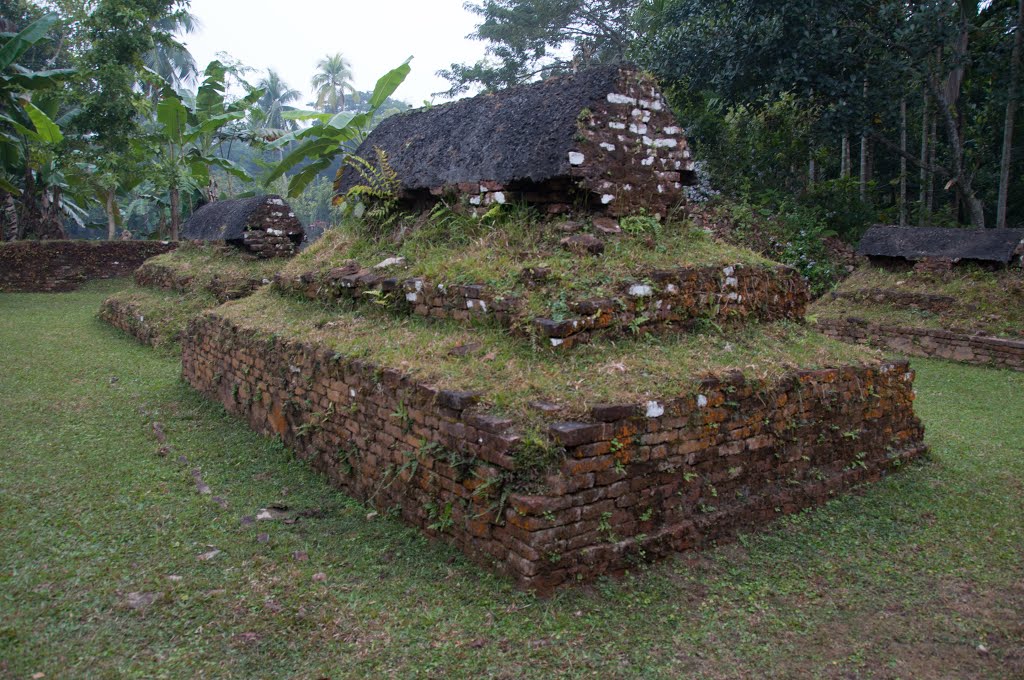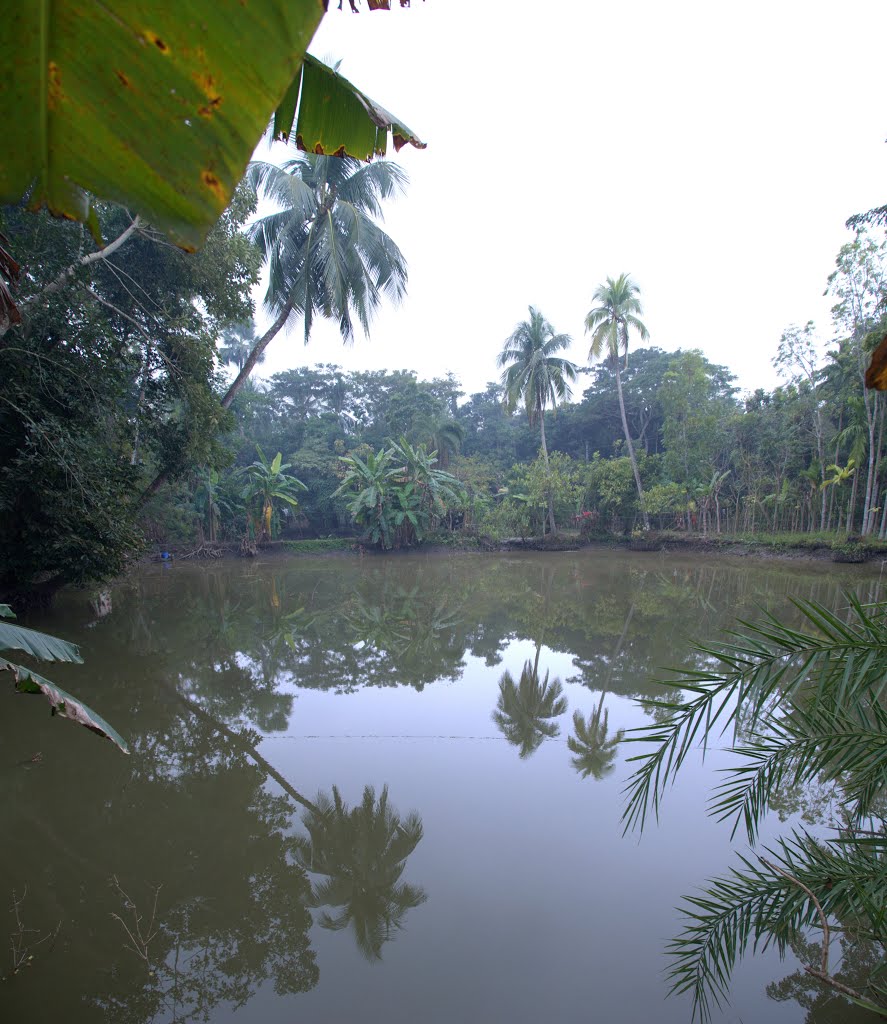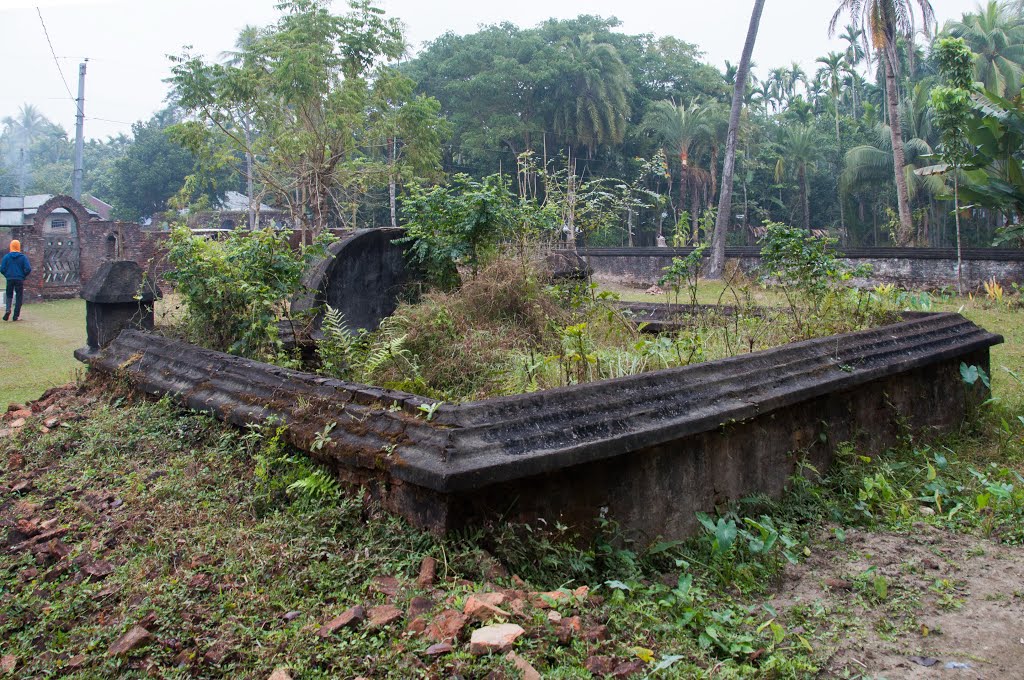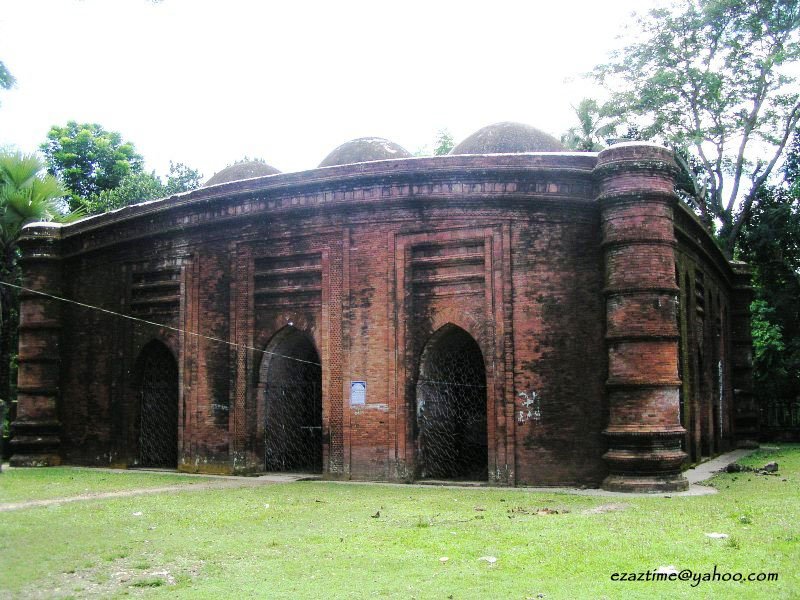Zinda Pir's Tomb Complex
Overview of Zinda Pir's Tomb Complex
Zinda Pir's Tomb Complex situated less than half a kilometre to the west of Khan Jahan's tomb at Bagerhat. Zinda Pir's real name is said to be Ahmad Ali. Enclosed by an outer wall of 33.22m square with a triple entrance gateway in the north the complex consists of a single-domed tomb of the saint himself, a single-domed mosque and a number of brick-built graves ascribed to the family members of the Zinda Pir. It is locally said that the saint had his residence, now disappeared, to the north of the complex.
The tomb a brick-built square structure measuring 10.97m a side externally and is now in a very ruinous condition. The exterior angles of the building were emphasised with octagonal towers, bases of which are still in situ. The superstructure has completely crumbled down. Excepting the north wall, which is now preserved to a height of about 2.44m, the three other walls, once fallen down, have recently been repaired to a height of about 0.61m from the floor level. The walls are only 1.52m thick.
The building has three entrances on each of the east, south and west walls, while the north wall depicts a single archway having a large deep arched-niche on either side. The building must have been originally covered with a single dome on brick pilasters, two of which are still seen inside the north wall.
There is a brick cenotaph, under which lies buried the Zinda Pir, in the centre of the floor now cemented. The cenotaph, measuring about 4.88m by 3.66m consists of a triple terraced-podium and a keel-type top like those in the tomb of khan jahan and Pir Ali in the locality.
Since the building is in utter ruin only traces of ornamentation are now preserved here and there. The exterior surface of the north wall depicts two horizontal moulded bands at intervals, each being crowned with a row of blind crests like those in the six-domed mosque (c late 15th or early 16th century) nearby and the Godar Masjid (c Husain Shahi period) at bara bazar, Jessore.
It is claimed that the Zinda Pir came to this area earlier than Khan Jahan. But the surviving architectural features of his tomb and mosque suggest otherwise. The octagonal shape of the corner towers, the light construction and the exterior surface decoration, as noticed in this building, started appearing much later in the Ilyas Shahi and Husain Shahi monuments of south Bengal. The present tomb building, on ground of stylistic similarity, may therefore be assigned to the later Iliyas Shahi or Husain Shahi period.
The Mosque a single-domed square structure to the north-west of the tomb. Built in brick it measures, inclusive of the octagonal corner towers, 7.62m a side externally and 4.88m a side internally. The thickness of the walls is about 1.52m. The building has three arched-openings in the east and only one each on the north and south sides. Corresponding to the central opening, which is larger than the flanking ones, there is only one arched-mihrab inside the qibla wall with the usual rectangular projection on the exterior side.
The single brick dome has lost its upper part. The dome is supported on half-domed squinches springing from brick pilasters - two inside each wall. The cornice of the building has disappeared. Very little of the ornamentation of the mosque is now left. The octagonal corner towers have moulded bands at intervals. Vertical offsets and recesses variegate the exterior surface of the mosque. The eight brick pilasters supporting the dome above are decorated with raised ornamental bands at intervals.
The single mihrab of the mosque depicts usual decoration in terracotta. The mihrab niche, which has a beautiful engrailed arch, is set within a rectangular frame. The semi-circular mihrab niche depicts rows of panels enriched with cusped arch motifs. The rectangular frame of the mihrab is filled with interlocking patterns. The upper part of the frame is topped over by a frieze of blind petals.
The mosque is stylistically similar to the tomb beside. It should therefore be dated to the same period, later Ilyas Shahi or Husain Shahi period.
Copyright notice: Some contents and images are taken from wikipedia.org (under GNU-FDL) and copyright goes to wikipedia.org and other source sites, photographers and article writers.
What we play is life.
Louis Armstrong (1900 - 1971)


